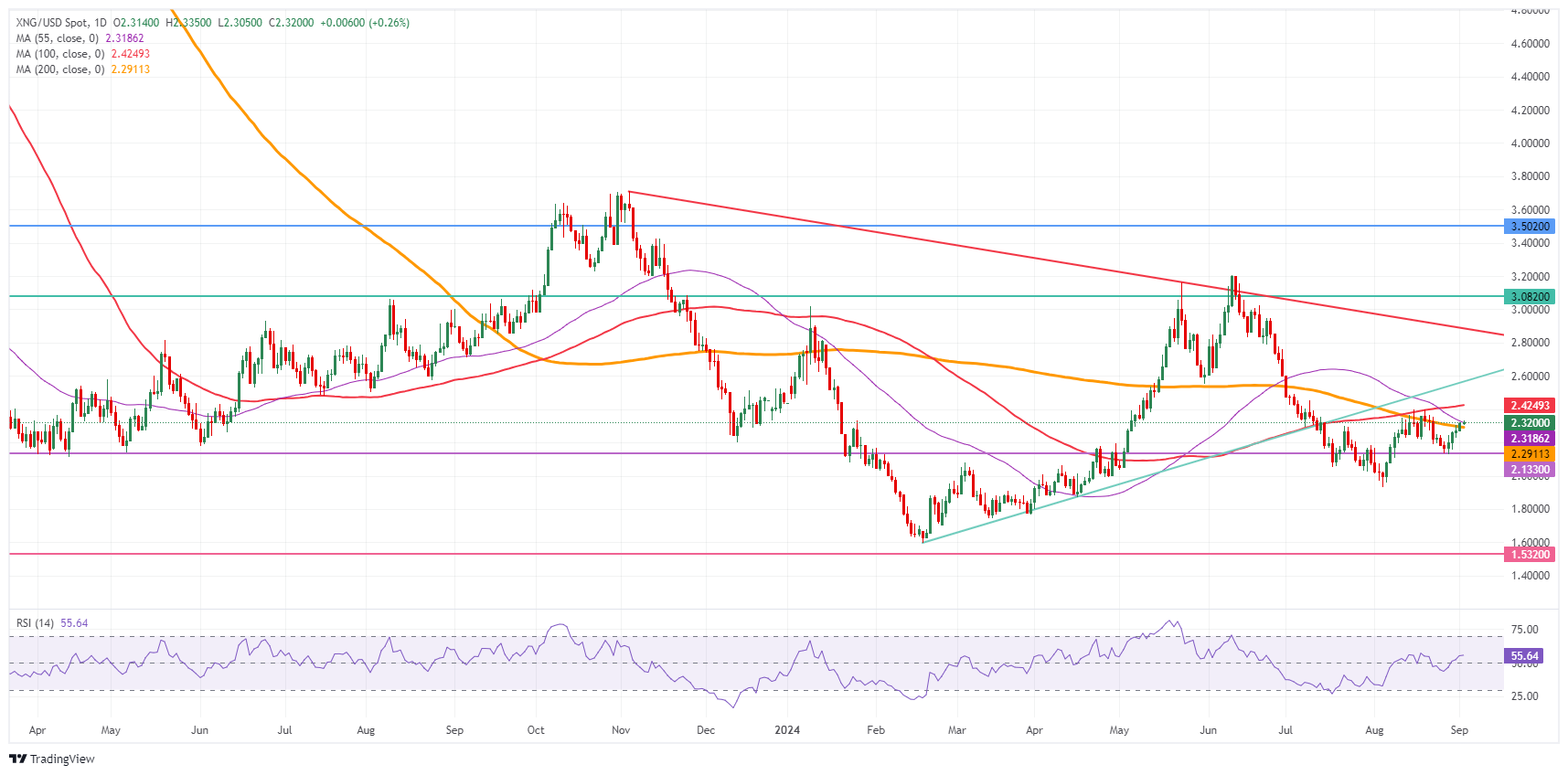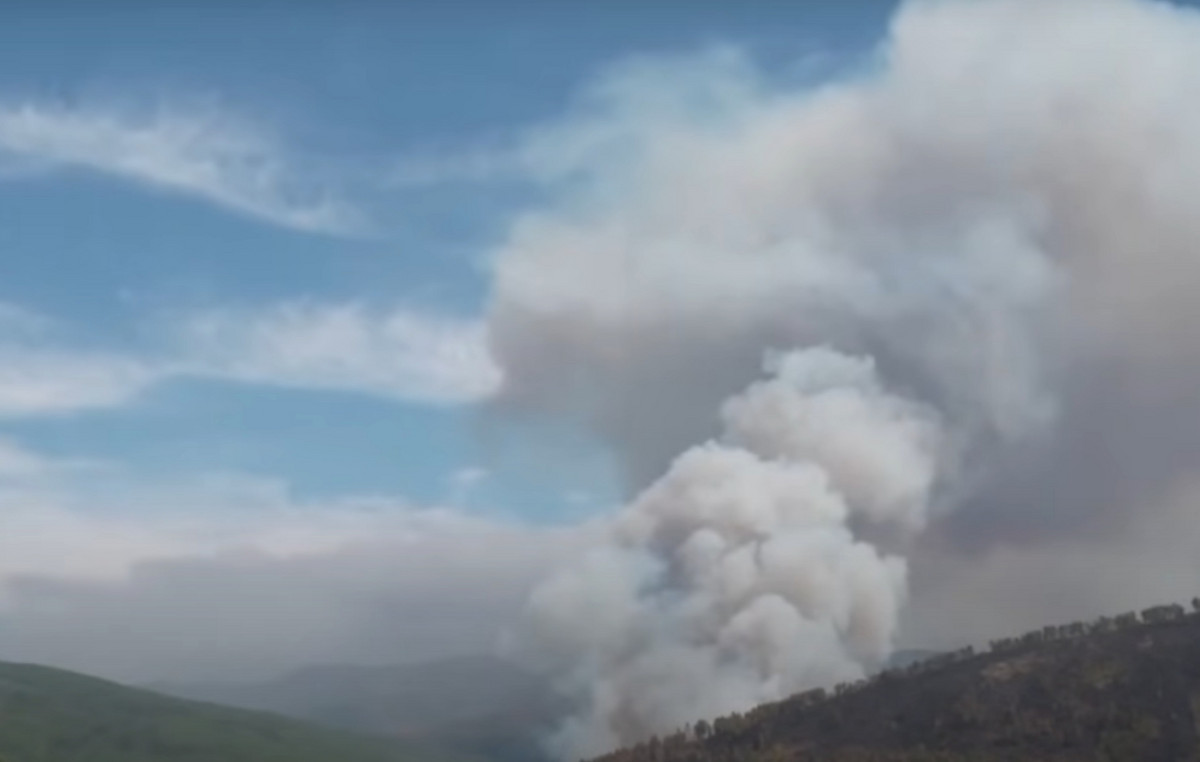- Natural gas prices reverse gains and fall more than 2.0% ahead of the US trading session.
- Markets are focused on Europe, where Germany sees its crown jewel Volkswagen launch a plan to reduce factories locally.
- The Dollar Index is holding steady just below the key level ahead of the ISM Manufacturing data.
Natural Gas is worsening ahead of the early start of the US trading session on Tuesday. Natural Gas prices are edging lower with markets focused on the recent headlines that Volkswagen is about to close factories nationwide. Europe is seeing its manufacturing engine falter, which could mean a serious spillover effect on several other Eurozone countries and could kill domestic growth and demand in the aftermath.
Meanwhile, the US Dollar Index (DXY), which tracks the value of the greenback against six major currencies, is holding on to its rally that took place last week. Markets were wrong after US Federal Reserve Chairman Jerome Powell’s Jackson Hole speech, betting that a September rate cut could be larger than 25 basis points. Recent US data shows that even a 25 basis point rate cut is starting to look doubtful, with Friday’s Non-Farm Payrolls report a key data point to confirm how big that September rate cut will be.
Natural Gas is trading at $2.27 per MMBtu at the time of writing.
Natural Gas Market News and Moves: Volkswagen Headlines Make Waves
- As the day progresses, there is more negative news for the European automotive sector. Audi joins the list of car manufacturers closing their plant in Belgium.
- Russian LNG supplier Novatek is offering LNG to ports in Europe or Asia.
- Gas storage facilities in Europe are more than 92% full, however, any disruption would still be enough to see gas prices rise, according to Bloomberg.
- Bloomberg Economics still flags risks from Ukraine’s incursion into Russia as an extreme risk to gas prices that could rise if Russia retaliates strongly.
- News from Germany that Volkswagen will cut its production facilities could mean lower demand for German industry as manufacturing in Europe slows further, Reuters reports.
Natural Gas Technical Analysis: European Auto Sector Means Trouble Ahead
Natural Gas prices are a bit divided as any upside appears limited for now. Europe has largely managed to achieve its goal of securing enough Gas to get through the upcoming heating season. Meanwhile, Russia is facing pressure on its financial system with China withdrawing its liquidity support due to US sanctions and Ukraine’s incursion into Russia. Expect any upside in Gas prices to remain moderate with no substantial recoveries taking place if current events remain as they are.
If more bullish headlines emerge and push the Gas price higher, look ahead for the moving averages as resistances on the upside. First, the 100-day simple moving average (SMA) at $2.42 would already be a significant move higher. Further above, the green ascending trend line at $2.56 could be tested.
On the downside, the very close support of the 200-day SMA at $2.29 should prevent Gas prices from falling further. Should that level be broken, $2.13 comes back into play for a test and possible drop below. Although still far away, a return to $2.00 or lower could mean a test of the August low, with $1.93 on the cards.
Natural Gas: Daily Chart
Natural Gas FAQs
Supply and demand dynamics are a key factor influencing natural gas prices, which are influenced by global economic growth, industrial activity, population growth, production levels and inventories. Climate influences natural gas prices because more gas is used during cold winters and hot summers for heating and cooling. Competition from other energy sources influences prices as consumers may opt for cheaper sources. Geopolitical events, such as the war in Ukraine, also play a role. Government policies related to extraction, transportation and environmental issues also influence prices.
The main economic release that influences natural gas prices is the weekly inventory bulletin from the Energy Information Administration (EIA), a US government agency that produces data on the gas market in the United States. The EIA Gas Bulletin usually comes out on Thursday at 14:30 GMT, one day after the EIA publishes its weekly Oil Bulletin. Economic data from major natural gas consumers can influence supply and demand, including China, Germany and Japan. Natural gas is primarily priced and traded in US dollars, so economic releases that affect the US dollar are also factors.
The US dollar is the world’s reserve currency and most commodities, including natural gas, are quoted and traded on international markets in US dollars. Therefore, the value of the dollar influences the price of natural gas, since if the dollar strengthens, fewer dollars are needed to buy the same volume of gas (the price falls), and vice versa if the dollar strengthens.
Source: Fx Street
I am Joshua Winder, a senior-level journalist and editor at World Stock Market. I specialize in covering news related to the stock market and economic trends. With more than 8 years of experience in this field, I have become an expert in financial reporting.








